.png.transform/rendition-xs/image_image%20(1).png)
Plátano de Canarias, Stronghold of Flavor
Canary Wharf. Dockside in the British capital. The late 19th century. What is now one of London's most dynamic economic hotspots, home to many financial and audiovisual companies, owes its name to the busy shipping route plied between the Canary Islands and Great Britain carrying a highly prized fruit - the banana. Nearly a century and a half later, this product is facing an exciting yet ambitious challenge: breaking into new international markets
Before its arrival in the Canary Islands, the history of this tropical fruit includes episodes dating back some two thousand years, although researchers have a difficult job pinpointing precise historic references to back this up. The absence of reliable evidence means that we can't trace the exact origins of this fruit or its subsequent journey, although experts think it may have come from south-east Asia. By the 5th century bananas had reached the African continent via the island of Madagascar and it was the Portuguese, on their many voyages across the Atlantic, who took it to the Canary Islands, the Azores and Madeira.
In the 15th century, Spanish caravels and other vessels sailing to the Americas made stopovers in the Canary Islands and took bananas on board part of their catalogue of plants, seeds and other products to barter with settlers in the new territories. By the 19th century, a free trade route had been set up with the port of origin and destination in the Canaries. From that time onwards, a number of British companies set up their headquarters in the Canary Islands and began to export Canary-grown fruit and vegetables bound for a single primary destination: the port of London.
Over a century has passed since those exciting early days and, after visiting several plantations of this leafy crop, we found that Canary Island growers are still preserving traditional farming methods combined with scientific pest control techniques.
Traditional farming
We're on the island of Grand Canary, the roundest in the archipelago and where 20% of all Canary bananas are grown. We leave the capital, Las Palmas and take the road inland to Arucas. The road runs through volcanic landscapes, as harsh as they are beautiful, and suddenly we're in a completely different area, where the dark ochre volcanic soil is carpeted with vivid green banana foliage. We reach a viewpoint high up on the mountain of Arucas that gives breathtaking views over banana plantations, vegetable plots, the coastline, rings of cloud on mountain peaks...
Minutes later, after going back to the outskirts of town along a road lined with prickly pears cactus and aloe vera, we arrive for our appointment with Daniel Godoy, an agricultural engineer working on the Marquesa de Arucas estate. Daniel is a typical Canary character, friendly and engaging, and he proudly shows us round this small plantations of banana trees: "We use 100% traditional farming methods".
Daniel explains that the banana "is actually a plant with the biotype of a tree, but it can't be classed as a tree, chiefly because it has no trunk". It may take up to year from when the main plant is seeded for the first bunch or 'hand' of bananas to appear. Daniel stresses that "a vital agricultural stage for this crop is selecting the offspring. Each 'mother' plant produces several offspring, called hijos (Spanish for sons); the first hijo appear in winter and we get rid of them. From the hijos that grow in summer, we select just one. We pull off the rest and clean the plant thoroughly so it can grow as healthily as possible".
Next to appear is the 'bell', a set of very large, tightly packed purplish leaves or petals shaped a bit like a giant acorn. These leaves gradually open up and fall off to reveal the bunch, or 'hand' of bananas. "Once the bunch is fully grown (it can weigh up to 50 kilos / 110 lb) it is propped up with a pole that's driven into the soil to prevent the plant from falling over. It's particularly vulnerable to strong winds, which are part and parcel of life here on the Canaries" explains Daniel.
Once the bunch of bananas is fully formed, Canary Island growers use another of the manual techniques at which they're experts, breaking off the bell, or flower. Removing the flower triggers the plant into releasing sap that gives Canary bananas their distinctive blackish tinge and the 'decorative' black spots.
A number of banana varieties are farmed on the islands, but the majority of growers have opted for the most traditional, the Dwarf Cavendish. This variety produces a smaller fruit than other bananas, with a thick greenish-yellow skin or yellow skin with black dots. It is easy to peel, with an excellent texture, intense flavor and is very aromatic.
Harvesting and export
While Daniel explains the step by step process of growing this crop, I walk around with him inside the plantations. I say "inside" deliberately, because I feel as though I'm in a dense jungle of vegetation, with plants standing almost two meters high and green foliage that hides us completely from above. But, despite the size of the leaves, sunlight does get through, creating a unique atmosphere. I can smell warm aromas and can hear the crunching sound my feet make as I walk on the dry leaves lying on the ground.
One fascinating part of the harvesting process is that the bunches or hands are collected while the bananas are still quite green, but have reached the required thickness and maximum sugar content. After cutting the bunch of fruit from the plant, they're wrapped in quilted plastic to prevent them from getting bruised on the way to the packaging plant. They're harvested at this particular stage to allow time for handling, for an even ripening process in storage and for the time it takes to ship them from the Canary Island ports to the Spanish mainland and on to other European markets.
One of the major objectives for the Canary Banana Producers' Association (ASPROCAN) is to ensure that the Spanish and European market for this fruit remains strong and reliable. Francisco Rodríguez Díaz is completely convinced of the virtues and benefits of bananas, but he doesn't make light of the difficult situation currently facing the sector he represents: "We're right in the middle of one of the most worrying moments in the history of Canary Island banana growing. We're extremely concerned about the reduction in duty applied by the European Union to bananas imported from third countries".
But, serious problems require serious solutions: "We're convinced that the way forward is to get consumers to appreciate the huge differences between Canary bananas and other types: our product is riper, it stays on the plant for longer and has a higher moisture content than other banana types, and this gives it a better and more intense flavor". The pressing need to differentiate Canary bananas from the rest means that an application has already been made to the European Commission for obtaining and registering the Canary Banana Protected Geograhical Indication quality mark.
Marketing efforts are presently being concentrated in Germany, where you can buy Canary Island bananas in both the Karstadt and Kaufhof supermarket chains. Other commercial markets starting to show positive results are the United Kingdom, the Netherlands and Portugal.
Bananas in the kitchen
You normally find bananas eaten as fruit, at breakfast, tea-time or as a dessert. But chefs on the Canary Islands and on the Spanish mainland are trying out fresh new ways of using them in the kitchen. During our tour of some of the banana-growing areas on Grand Canary we were lucky enough to visit a lovely spot, Caleta de Abajo, in the municipality of Gáldar, in the north of the island.
We found a small family restaurant run by young Canary-born chef Francisco Muñoz. The restaurant produces 100% traditional Canary cuisine, from its position on the edge of a rocky cliff top and overlooking a tiny beach. Francisco is a staunch defender of the island's authentic local products, such as fish, cheeses and meats, and he keeps a surprise up his sleeve to round off your meal: Mamá Lolilla's Canary banana dessert. It's made by flambéing a whole peeled banana in a frying pan with butter and brandy. Next, a slice of fresh Canary island cheese is added, and when this has melted it's all transferred to a plate and finished off with a scoop of vanilla ice cream.
Asturias-born chef Nacho Manzano from Casa Marcial (2 Michelin stars) and advisor to the Ibérica restaurants in London, is also a fan of the coffee-banana combo. His dishes include Canary bananas stewed in coffee, with saffron and chocolate ice cream (an interesting toasted flavor that cuts through the sweetness of the banana), or Canary banana tartar (crushed banana flesh, with ginger, squeezed lime, salt flakes and chocolate mousse). "This is a magnificent product, with a very distinctive texture, aroma and flavor, and can bring a touch of elegance to haute cuisine creations" says Manzano.
Another Canary Island chef doing interesting things with bananas is Pedro Rodríguez Dios at his new restaurant, Humboldt, in La Orotava (Tenerife). "It's energy-giving and packed with minerals and vitamins, an all-round power food. I always have a couple of dishes featuring Canary bananas on the menu". At the moment he's serving Egg cooked at a low temperature with fried banana and confit of black pig pancetta, plus Freshly caramelized banana with cookie cream and orange jelly.
Spanish chefs based on the mainland are also showing their support for Canary bananas. Asturias-based chef Miguel Sierra, a disciple of Paco Torreblanca, believes that "Canary bananas make an instant impression on us because of their familiar aroma and smooth texture". His suggestion for the sweet-toothed: Medallions of banana filled with melted dark chocolate in a cider gelée and a cocoa and corn cookie.
Before its arrival in the Canary Islands, the history of this tropical fruit includes episodes dating back some two thousand years, although researchers have a difficult job pinpointing precise historic references to back this up
Rodrigo García/©ICEX
Translation: Lionbridge/©ICEX
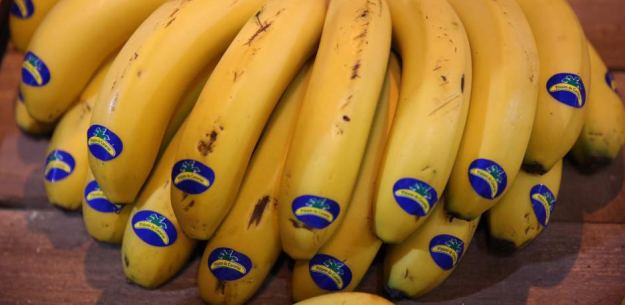
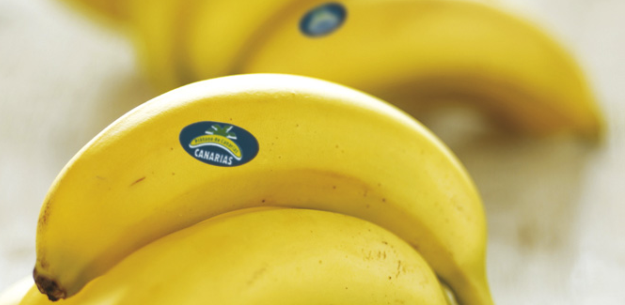
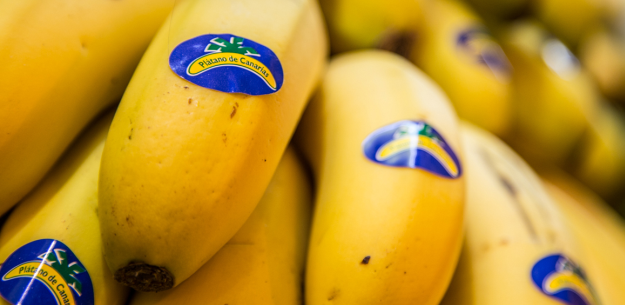
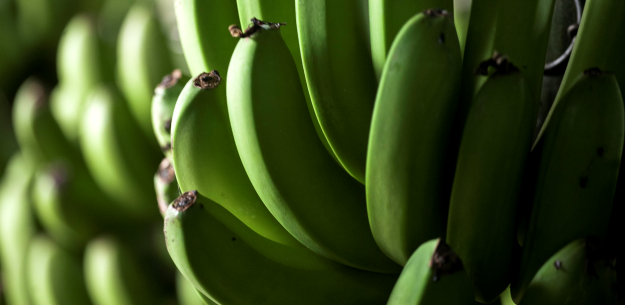
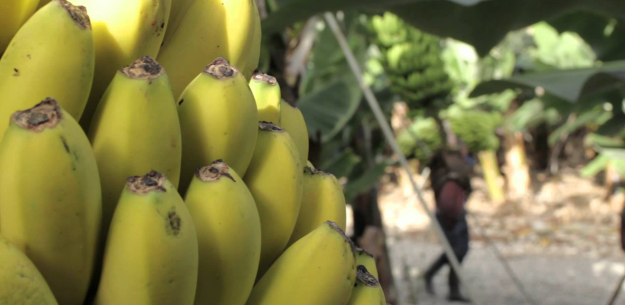
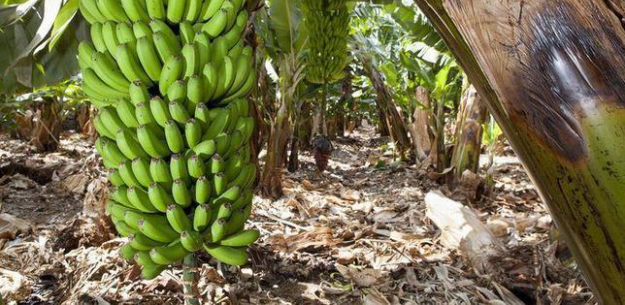
- Image1
- Image2
- Image3
- Image4
- Image5
- Image6


